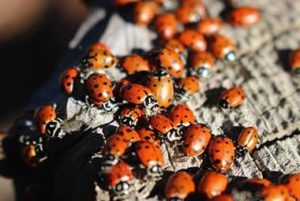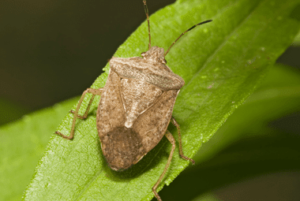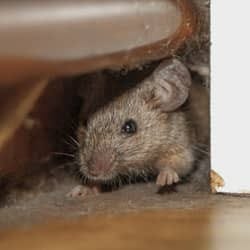Today we want to talk about a pest whose high season is in July and who can cause great frustration for homeowners and business owners in Knoxville, Maryville, Sevierville, and many other surrounding areas. The pest in question is the Indian meal moth, or pantry moth, and they can wreak havoc in the kitchen.
Indian meal moths are “stored product pests,” which means that they attack and inhabit plant-based foods. You’ll know if you’ve got pantry moths because you’ll begin to see tiny whitish moths fluttering around the room, mostly in the evening and mostly in the kitchen. They are distinctive from other moths because they will not be attracted to the light. The key feature used in identifying meal moths is a small copper-colored section on the tips of their wings. Other indications of a meal moth infestation are tiny white worm-like creatures (those are the larvae) moving along surfaces anywhere in the house and silk webbing that may resemble cobwebs inside the pantry.
So, what should you do if you suspect that you have meal moths? I’ll be honest: these pests can be very tricky to eliminate, and professional help is often needed to complete the job. Still, there are several things that you can try at home, and just being aware that meal moths exist can help you stop an infestation before it starts. The most important factor in stopping a meal moth population explosion is to find the infested items. Check all of your grains, including flour, rice, and cereal first. Keeping those in air-tight containers helps to stop the moths from getting in. Pay particular attention to items that may have been sitting for a while, such as bulk foods that you move through slowly. You are looking for moths, larvae, or silk webbing that surrounds the larvae as they feed. You’ll know it if you find it.
Unfortunately, these moths can attack almost anything plant-based, so you can’t stop at the obvious. Meal moths have been known to infest chocolate, dried fruit, pet food, preserved flower arrangements, and many more unexpected items. You may have to think outside the pantry when you’re hunting for them. For instance, an abandoned squirrel’s nest in the attic or up the chimney could feed many generations of meal moths. Consider all the possibilities before giving up hope of finding their nest.
The most popular over-the-counter pest sprays are not labeled for meal moths. But, simple maintenance and sanitation can go a long way to solving the problem. When you do find contaminated items, get rid of them immediately. Use a vacuum attachment to eliminate all webbing that you find; then, if it reappears, you’ll know you haven’t eliminated all of the contamination. In addition, use that attachment to vacuum crevices around the home, including along all of the baseboards and around the cabinets. The larvae scatter before pupating in a nice, quiet crack that doesn’t get much activity. This means you could have half-grown moths around the house even if you eliminate the nest.
At Russell’s Pest Control, we use other items to help fight off these moths. Insect growth regulators (IGRs) disrupt the moths’ ability to move from one life cycle to another; these products have no effects on humans or pets, but they can stop insects from reaching a breeding age. In addition, we often use traps laced with meal moth pheromones to draw the male moths in. If there are no males to breed with the females, the population begins to die out quickly.
Need a free inspection to find out if you’ve got a pantry moth problem? Want someone to answer questions or give good pest advice? Well, you know where to reach us.
Indian Meal Moths: The Infuriating Pantry Moths in Knoxville TN
Serving East Tennessee since 1971


